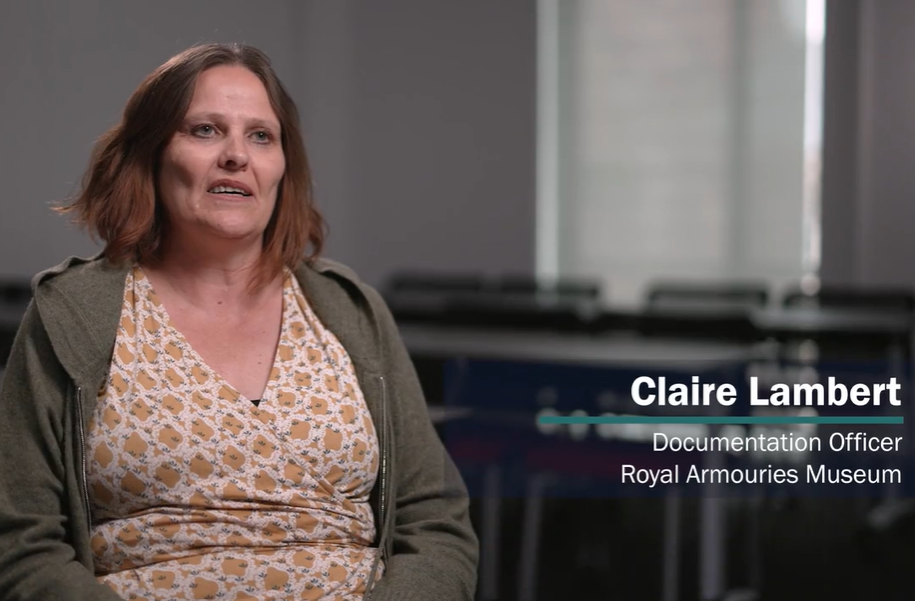
Online Collections Case Study: How the Albright-Knox has Increased Visitors to Their Online Artworks by 326%
Visit the Albright-Knox Art Gallery online and you’ll find yourself somewhere light and clean. Somewhere that gives you time and space to think. Somewhere interactive yet unobtrusive. Where information presents itself to you without distracting you from the large, high-resolution artworks that span your view.
It’s what you’d expect from a ‘vibrant museum in the heart of Buffalo’s cultural district’—a museum that houses one of the world’s most renowned collections of modern and contemporary art. Yet, the Albright-Knox has achieved something that many leading institutions struggle with—the extension of the physical space, online.
According to Digital Content Manager Pamela Martin:
“We wanted to make the website an engaging experience for different audiences, one that would complement the gallery spaces. We wanted to make it easier for visitors to navigate online, find related works, and download and share information and content from the site.”
Just like the physical museum, the website delivers artworks with concise descriptions. Unseen to the eye, data and assets are being pulled from the Mimsy XG Collections Management System and their digital asset management system, resulting in high-resolution images meeting consistent, accurate information seamlessly online.

The Successes: Improving Visitor Engagement and Discoverability
The result is a website that delivers a tangible improvement in online engagement with the collection.
In the six months following the launch, there was a 136% rise in visitors to the Search the Collection landing page, compared to the previous six months, up from 7,590 to 17,936. Perhaps even more impressive, visitors to artwork pages increased a massive 326%, up from 14,873 to 63,365. What’s more, visitor engagement appears higher, with visitors staying on pages 29% longer than before.
“We believe the implementation of the tool was a success,” said Martin. “The design is clean, simple, and seamless with the rest of our new website, and the functionality of the tool gives users many more search options, increasing the likelihood they will find the artwork, or set of artworks, they are interested in learning more about. Some of the search options in the new tool—such as the ability to search by object type, date range, or donor—may also lead people to discover artworks in our collection that are new to them. In addition, the introduction of sorting functionality allows users to easily hone in on what they are looking for within a larger set of search results.”
Anecdotal evidence suggests an unforeseen benefit has been the ease in which users are able to find lesser-known artworks. For example, children in the museum’s annual ‘Art Alive’ contest surprised staff members by re-creating works of art that some didn’t even know were in the museum’s collection.

The Project: From Grant Application to GLAMI Nomination
In 2015, the Institute of Museum and Library Studies (IMLS) approved the Albright-Knox’s grant application for funding to create a new web-based Search the Collection tool. The search tool would be integrated into their new responsive website.
“The overall goal of the project was to provide users the ability to efficiently search for and easily retrieve images of and contextual information about artworks in the museum’s collection in order to further education, scholarship, and research,” said Martin. The project was needed because the museum’s prior Search the Collection tool supported only general keyword searching and retrieval of a fraction of the information and assets that have been added to our collections database and digital asset management system since the start of the initiative.”
The site, which was nominated for a GLAMI Award, is built using Drupal, pulling artwork data from Mimsy XG (via a MySQL database) and artwork images from the DAMS. Artworks are easily searchable by keyword, object type, date and collection.
The Collection Timeline is a real high point in terms of user experience. Interactive and educational, it guides visitors chronologically through the movements of art history, from Impressionism to Expressionism, Cubism, Surrealism, and more.

The Lessons Learned: Be Flexible, Be Consistent and Be Brave
Unanticipated costs and time setbacks can derail major projects. But the Albright-Knox team had the freedom to reshuffle their priorities. Not only did they manage to complete the project on time, they also used the challenges as an opportunity to learn how to work better going forward.
“We learned quite a few lessons throughout the implementation of this project, as it was even more complicated than we anticipated,” said Martin. We discovered that, instead of pulling everything from our digital asset management system, it was best to pull artwork data from our collections database, Mimsy XG, and to pull artwork images from our digital asset management system.
“Establishing the middle layers has had the unforeseen side effect of making us more aware of inconsistencies in our collection data and motivating us to fix issues that we find. It has also made us aware of the need to add additional data to the MySQL database and website in the future.”
“We also learned the value of tackling tasks head on, especially the ones that people don’t want to deal with, such as copyright,” said Digital Assets Manager Kelly Carpenter. “The project has reminded us that we don’t have the entire collection digitized and that’s a goal. People can see that now.”

What’s Next? The Benefits of Long-Term Thinking
In the short-term, feedback gathered in staff and user surveys gives the Albright-Knox team a clear idea of how they can improve the search functionality. They hope to make search results more relevant and investigate enhancements, such as Google-style suggested results.
The Albright-Knox team is already planning its next move and the foundations are in place.
“Since the new website was built using the latest version of Drupal (8), we expect the infrastructure that the Search the Collection tool is built on to last for at least ten years, through the next two iterations of our website,” said Martin. “While we may change the front-end look and feel of the tool when we redesign our website again, the underlying data structure and content management system will remain viable and intact, enabling us to conserve costs during our next two website redesign projects and provide continuity of functionality and data presentation for our users who become familiar with the tool.
“The intention is that the infrastructure behind the Search the Collection tool will also serve as the foundation for the development of various education and community engagement projects, including an app.”
By themselves, building a new website or putting your collection online can be taxing projects. They’re time-consuming, labour intensive and a strain on resources. They’re also two of the most important pieces of work that many collections institutions will undertake over the next few decades. They’re vital for reaching broader and more contemporary audiences. And they give collection items a new life in a new age.
Projects like the one undertaken by the Albright-Knox Art Gallery also make you think in new ways and improve your day-to-day work; and learning from these lessons will pay off in the long run.




